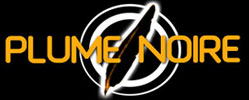
|
|
Herzog, wishing to pay homage to Murnau's Nosferatu that he regards as the major work of German cinema, poses Nosferatu the Vampyre as the missing link between the Expressionism of the Twenties and contemporary German cinema. His preparation is thus limited to the study of film and the novel, carefully avoiding the multiple film adaptations carrying the grotesque label "Dracula". The result is a sublimated homage where film and paper merge to better complement each other. While for Murnau nature and architecture were the film's core, Herzog contrarily stresses the characters as the story's main catalysts. The acting of both Klaus Kinski (Nosferatu) and Isabelle Adjani (Lucie) must thus be on a grand scale while Jonathan Harker (Bruno Ganz) is relegated as a supporting actor. The concept of space and the voluntarily slow rhythm replace nature and architecture as the allegories of danger that the count represents. Nosferatu the Vampyre is probably richer in symbolism than its predecessor. In particular, Werner Herzog constantly situates his film between the world of dead and the undead just as a reflection of the state of the count. In the opening scene a succession of real mummies is presented, palpable witnesses of death and the heralds of what's to come. In addition to Nosferatu, Lucie is another character between life and death. Several clues are given to us, from the medallion with her photograph and a lock of her hair, to her phantom-like paleness and white dress to the wait in the cemetery. She knows her death is imminent, and her telepathic link with the count seems to confirm this. She's also seen at the table, in the middle of plague infested people enjoying their last moments before the following scene, where the rats replace the guests, casts doubts. The filmmaker uses the immense spaces and the sea as representations of a spider web that the vampire weaves around his prey. Space sometimes becomes an entirely separate character or a projection of the soul of the protagonists. Herzog obviously profits from technological advances to offer his own vision of the story. The aesthetic cinematography and the oppressive music marry with wonder to create a film with a strange and bewitching atmosphere. In Herzog's hands the cult scenes are as good as the original. For Murnau, the passage between the world of the living and the dead was symbolized by the use of negatives showing a barouche in the forest, while for Herzog it is on foot and through a cave contrasting with a brook, the source of life. The foreground of the vampire is more intimate but just as impressive. Herzog's answer to the famous scene where Nosferatu arrives at the staircase, is to have Nosferatu in a tunnel in bluish tones then an apparent immobility on Nosferatu's part that's much more dangerous. The long boat crossing is itself more troubling than the original thanks to an impression of gravity and lugubrious music that forms a funeral march. The principal difference between two films lies in the character of the vampire. Murnau's is cruel but noble while Herzog makes him a vulnerable and sad being. Kinski's Nosferatu is initially androgynous and bisexual. A sign of the times, he shows a homosexual attraction for Jonathan and then a heterosexual one for his wife. The mortal bite he gives her obviously has a sexual connotation and celebrates the end of virginity. This Nosferatu, more than one predator, is above all the prey of a destiny that never allows him to know neither love nor death. His death thus resembles a suicide in the arms of pleasure. Consequently this vampire is especially more human than his predecessor. His shriveled corpse is the ultimate proof whereas Murnau's vampire disappeared into ashes. In a final wink, the vampire hunter arrives too late, as if to confirm that the count chose his own destiny. Added to the exceptional direction is the superb tormented acting of Klaus Kinski, completely in control of his emotions, and Isabelle Adjani, a frozen beauty who sacrifices herself. By drinking the essence of a classic, Werner Herzog in an ultimate act of vampirism, has taken on the survival of a myth.
|
|

